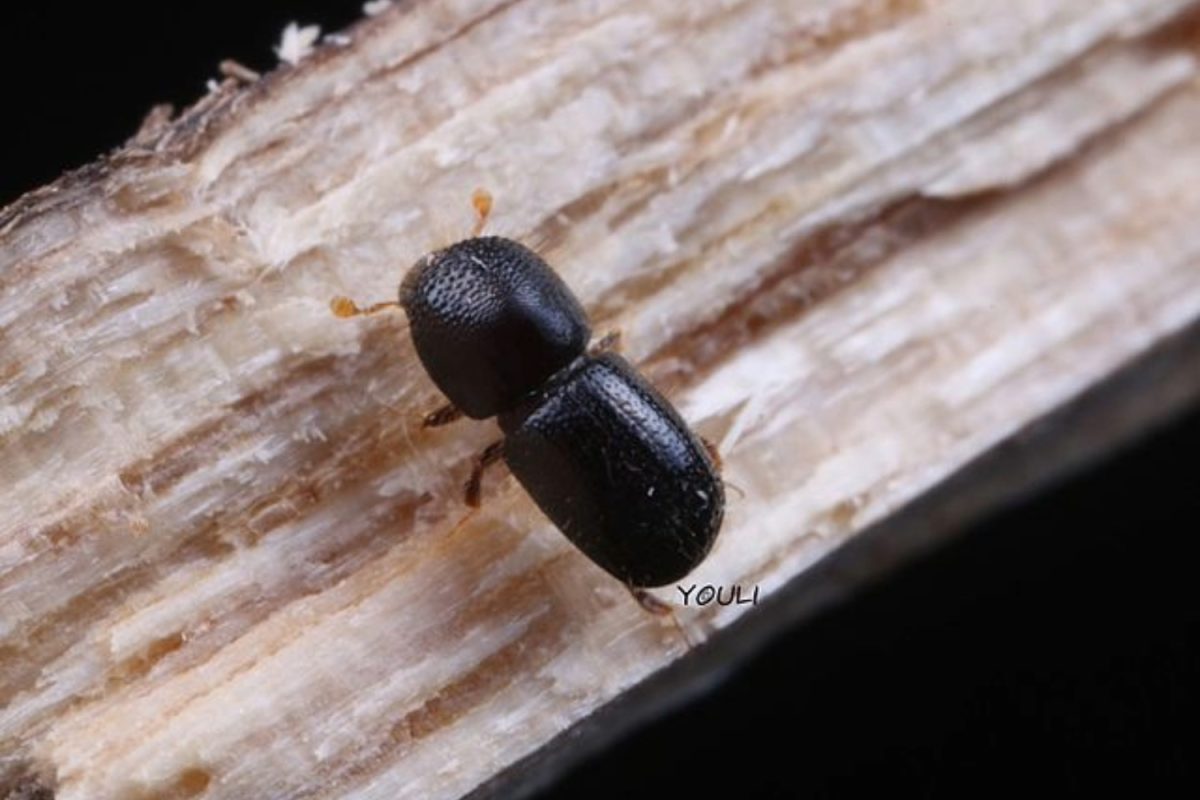Insects are infesting holes in tree trunks and feasting on its interior, killing trees and placing Bay Area communities at risk.
Following their recent arrival into the Felton area and around Coyote Creek in San Jose, these invasive shothole borer beetles (ISHB), smaller than the size of a sesame seed, are killing more than 65 species of trees in California. Los Angeles, Orange, Riverside, and San Diego were several counties that were caught victims of thousands of tree deaths.
Researchers are closely examining the extent of their infestation on trees. The Valley Oak, California Sycamore, Japanese Maple, and Box Elder are among the species of trees that are dying due to insect infestation. The shothole borers dig into host trees and produce a fungus that acts as nourishment for beetles. This fungus spreads disease in trees, blocking their water and nutrient intake, eventually harming them and in some cases, killing it.
“These beetles go into the tree and stay there, so it’s really hard for anybody to notice that they’re in the tree unless you notice a small hole in the bark,” said Carlmont biology teacher Brian Bianchi.
The Department of Agriculture is recommending residents to fill out an online assessment to track the beetle’s spread. ISHBs are roughly 0.1 inches in length and, therefore, difficult to see. These beetles create tiny, pinpoint marks in trees, and while the effects seem small, they have massive impacts, jeopardizing both natural and urban environments.
“Invasive species are a huge problem, especially in fragile ecosystems like the coast redwood forest. As climate change becomes more impactful, I think invasive species like that are going to be even more harmful. It’s important for ecologists and park rangers to take care of that problem,” said biotechnology teacher Jennifer O’Hara.
One of the big issues is that many people in the Bay Area might not know about these species.
“I have not heard about this specific beetle, but I know there are a couple of beetles throughout the United States that are a similar issue,” O’Hara said.
Bianchi similarly claims he never knew about these beetles, but he was aware of other invasive species from the past like the cane toad in Australia, which is still impacting the ecosystem today. He worries about the insect’s spread to other parts of the Bay Area.
“It’s only a matter of time before they make their way further north,” Bianchi said.
Another issue is whether students will strive to raise awareness of non-native species that are harming our planet. With higher workloads at school along with other extracurricular activities, taking time to increase awareness can be a challenge.
“Honestly, kids are probably not going to care. That’s the biggest thing—getting them to care about it and then take action, whatever those actions might be, whether it’s dedicating time or making posters to let people know that this is an ongoing problem. Ultimately, we got to get them to care about something before they’ll do anything,” Bianchi said.
Bianchi says it is difficult for Belmont residents to stay watchful of this issue unless they know the signs of what to look for.
“If you have a 50-foot tall tree, you’re not necessarily going to see those little pinholes if they’re way up at the top, so I think educating the public about it would help. But again, how much is that going to do if you don’t care about the trees or you don’t care about any trees in your backyard to look at?” Bianchi said.
The two types of ISHBs are characterized as the Polyphagous shothole borer (PSHB) and the Kuroshio shothole borer (KSHB). Their specific names are the Euwallacea Fornicatus and Euwallacea Kuroshio.
The PSHB was first discovered in Los Angeles County in 2003 and went undetected until 2012. Over the years, they have stirred havoc in seven counties. Meanwhile, researchers spotted the KSHB in 2014 in avocado groves of San Diego County and recognized an infestation outbreak in the Tijuana River Valley in 2015.
These species are affecting California’s economy, placing strains on the financial management of forests. The total costs of tree death ranged from $156 million to over $1.09 billion, covering lost ecosystem services, replanting, and removal of dead trees.
According to Bianchi, humans today are similar to ISHBs in terms of how they spread.
“One of the most deadly invasive species is us. We just come into an area and take over everything,” Bianchi said.
Carlmont students can bring this issue to the rest of the Carlmont community and be on the lookout in various ways.
“Proactively looking on the trees for any of those signs, like little pinholes, and then get help to possibly come in and check the really tall trees,” Bianchi said.
O’Hara believes that residents must quickly report signs of infestation to authorities and understand what types of invasive species are present.
“It’s also important to be aware of how invasive species get introduced into an ecosystem, and how people can take steps to not spread invasive species in areas,” O’Hara said. “If the tree populations that they inhabit start to decline, they’re going to find more trees and different types of trees to bore into and ruin their populations. Belmont is an urban area, so it might not be quite as big of a concern, but I think we’re going to see impacts.”
Max Oestreich, the president of Carlmont’s Science Club shares his opinion on how the Carlmont community can stay prepared for these attacks.
“One main thing residents here in Belmont can be watchful of this issue is just to stay informed,” Oestreich said. “Try to gain more knowledge on the issue and how your home might be affected.”
Other resources:
Contact the arborist’s office: 408-794-1901 or arborist@sanjoseca.gov
Department of Agriculture: cc.agriculture@cep.sccgov.org or 408-918-4610












